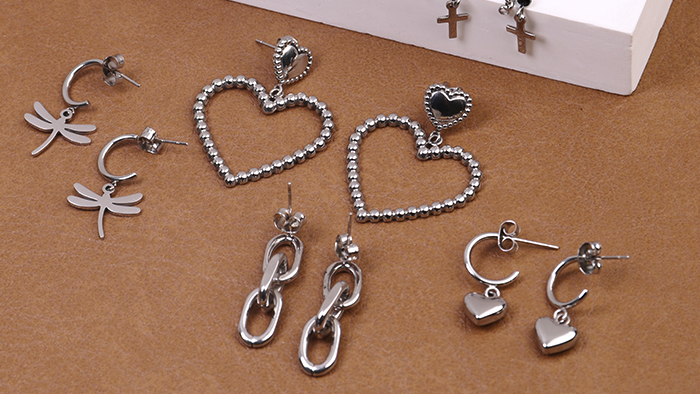The important of Titanium vs. stainless steel wholesale jewelry
In the dynamic world of fashion and accessories, the choices available to consumers have expanded significantly, with stainless steel and titanium emerging as prominent materials in the jewelry market. This essay aims to delve into the realm of stainless steel wholesale jewelry, examining its growing popularity, and shed light on the intriguing comparison between titanium and stainless steel jewelry.
Stainless Steel Wholesale Jewelry:
The wholesale jewelry market has experienced a notable shift with the increasing demand for stainless steel jewelry. Stainless steel, once primarily associated with industrial applications, has become a staple in the world of fashion due to its unique combination of durability, versatility, and affordability.
Wholesale stainless steel jewelry has gained favor among retailers and consumers alike for several compelling reasons. Firstly, the material's inherent strength and resistance to corrosion make it an excellent choice for crafting high-quality jewelry that can withstand the test of time. This durability is a crucial factor in wholesale jewelry, where retailers seek to offer customers pieces that not only meet their aesthetic preferences but also provide lasting value.
Furthermore, the versatility of stainless steel allows for a wide range of designs, from classic and timeless to modern and edgy. Jewelry artisans can explore various techniques, such as casting, forging, and engraving, to create intricate and personalized pieces that cater to diverse tastes. The affordability of stainless steel adds another dimension to its appeal in the wholesale market, enabling retailers to provide their customers with stylish and well-crafted jewelry at competitive prices.
As consumer preferences continue to evolve, stainless steel wholesale jewelry has also adapted to meet the demand for sustainable and eco-friendly options. Stainless steel is a highly recyclable material, aligning with the growing consciousness towards environmental responsibility. This aspect adds an extra layer of appeal to stainless steel jewelry, positioning it as a choice that not only offers longevity and style but also aligns with contemporary values.
Titanium vs. Stainless Steel Jewelry:
While stainless steel has carved its niche in the jewelry market, titanium also stands out as a formidable contender. The comparison between titanium and stainless steel jewelry involves a nuanced evaluation of their respective properties, aesthetics, and suitability for various applications.
Titanium, known for its exceptional strength-to-weight ratio, has gained recognition in the aerospace and medical industries. In the realm of jewelry, it presents a compelling alternative to stainless steel. One key distinction between the two lies in their weight – titanium is significantly lighter than stainless steel, offering a feather-light feel that appeals to those who prioritize comfort.

Moreover, titanium boasts impressive corrosion resistance, rivaling that of stainless steel. This makes titanium jewelry an excellent choice for individuals with sensitive skin or those prone to allergies, as it minimizes the risk of irritation often associated with other metals. The hypoallergenic nature of titanium positions it as a preferred option for those seeking jewelry that combines durability with skin-friendly attributes.
However, the choice between titanium and stainless steel jewelry ultimately depends on individual preferences and specific use cases. Stainless steel, with its affordability and diverse design possibilities, remains a favorite in the fashion industry and wholesale market. Titanium, on the other hand, caters to those who prioritize a lightweight feel and heightened corrosion resistance.



